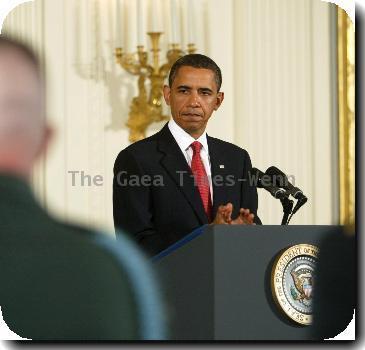$8B loan guarantees for Ga. plants may spur nuclear comeback 30 years after Three Mile Island
By Matthew Daly, APTuesday, February 16, 2010
Fed loan guarantees may boost nuclear power return
WASHINGTON — More than $8 billion in new federal loan guarantees to build two nuclear reactors in Georgia could be the first step toward a nuclear renaissance in the United States, three decades after the Three Mile Island nuclear accident halted all new reactor orders.
With the nuclear industry poised to begin construction of at least a half dozen plants over the next decade, President Barack Obama announced the first loan guarantees Tuesday, casting them as both economically essential and politically attractive. He called nuclear power a key part of comprehensive energy legislation that assigns a cost to the carbon pollution of fossil fuels, giving utility companies more incentive to turn to cleaner nuclear fuel.
“This is only the beginning,” Obama said in designating the new federal financial backing for a pair of reactors in Burke County, Ga., to be built by Atlanta-based Southern Co. Obama’s budget would triple — to $54.5 billion — loan guarantees available for new nuclear construction.
The federal guarantees, authorized by Congress in 2005, are seen as essential for construction of any new reactor because of the huge expense involved. Critics call the guarantees a form of subsidy and say taxpayers will assume a huge risk, given the industry’s record of cost overruns and loan defaults. Reports by Congressional Budget Office and Government Accountability Office have estimated that the risk of default for new nuclear reactors could be as high as 50 percent.
“This is a pre-emptive bailout where the government has already guaranteed to saddle taxpayers with any failure that the (nuclear) industry might run into,” said Allison Fisher, an energy organizer at Public Citizen, a Washington-based consumer advocacy group.
Critics also note that the loan guarantees come at the same time Obama has proposed eliminating a long-planned nuclear waste dump at Yucca Mountain in Nevada. Obama has appointed a commission to find a safe solution for dealing with nuclear waste, but in the meantime the government has no long-term plan to store commercial radioactive waste.
Energy Secretary Steven Chu told a Senate committee this month that for the foreseeable future nuclear plants likely will store spent fuel rods on site.
Environmentalists say renewable energy such as wind and solar are more cost-effective than nuclear power and do not come with side effects such as radioactive waste.
But Marvin Fertel, president of the Nuclear Energy Institute, a policy organization for the nuclear industry, said the loan guarantees will spur construction of nuclear plants all over the country, reducing greenhouse gases blamed for global warming and creating thousands of high-paying jobs.
The Georgia project is expected to create about 3,500 construction jobs and permanently employ 850 people, and Obama coupled the loan guarantee announcement with a visit to a job training center in Lanham, Md., at the headquarters of Local 26 of the International Brotherhood of Electrical Workers. The union represents electrical and telecommunications workers, and it offers training for energy jobs, including the construction of nuclear power plants.
Obama said the new reactors would reduce carbon pollution by 16 million tons a year, compared with a similar coal-fired power plant.
Although Chu called Tuesday’s announcement a significant step to restart the domestic nuclear industry, actual construction of the first reactor is still years away. Southern Co.’s application for a license to build and operate the reactors is pending with the Nuclear Regulatory Commission, one of 13 such applications the agency is considering. The earliest any could be approved would be late 2011 or early 2012, the NRC said.
Southern Chief Executive David Ratcliffe and Chu both said the new generation of nuclear reactors will be significantly safer than those built during the 1970s because of improvements in technology. This time around, the industry and regulators have streamlined licensing and are planning to use a standard design. The Three Mile Island accident in 1979 forced numerous power plants to be redesigned during construction.
“I have a lot of confidence that our approach this time will yield much better results,” Ratcliffe said.
Associated Press writers Julie Pace and Tim Huber in Charleston, W.Va., contributed to this report.
Tags: Accidents, Barack Obama, Energy, Energy And The Environment, Energy Policy, Environmental Concerns, Geography, Georgia, Government Regulations, Industry Regulation, North America, Personnel, United States, Utilities, Washington, Waste Management, Weapons Administration



